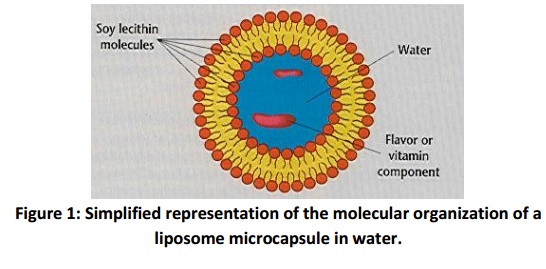Chapter: Basic Concept of Biotechnology : Medical Biotechnology
Other Applications of Biotechnology in Medical field
Other Applications of Biotechnology in Medical field
Medical Applications of Molecular and Cellular Immobilization Techniques
Immobilization technique is applied in various ways in medicine. One of the applications is related with the regulation of equilibrium between coagulation and dissolution of coagulated blood i.e. fibrinolysis. Fibrinolytic therapy is used by the doctors for treating occlusions in some parts of the body where surgery is risky thus preventing deaths caused by thrombosis. Heparin and Plasmin are important enzymes having been immobilized for employ in such therapy.
Genetic Manipulation of Microorganisms
The performance of microorganisms in the medical, pharmaceutical and industrial application has been enhanced by genetic manipulation technique. Some generic techniques have been described briefly with their applications. These techniques are used to increase the performance of cells or microorganisms for particular applications.
i. Mutagenesis-based Techniques
Mutagenesis brings changes in a DNA sequence and alters either the structure of the gene products or the expression of genes. It is sub categorized into two types based upon the type genetic manipulation: classical mutagenesis and transposon-directed mutagenesis.
Chemical mutagens are used in classical mutagenesis to control required processes in the target microorganism. The mechanism ofaction present in the targeted organism is traced through this classical approach.
In transposon-directed mutagenesis, the function of specific site of chromosomes is determined through genetic alteration of particular site on the target chromosome. This mutagenesis is more specific and used in cases where higher selectivity is required.
ii. Gene Transfer
In electroporation, the induced transient pores in a bacterial cell membrane allow the introduction of DNA inside the cell under preset laboratory conditions. Such methods are used in various microorganisms and even with plasmids that are of major use in the pharmaceutical industry.
The transference of genes can also be performed by Shuttle vectors. These vectors are actually such DNA constructs which are able to replicate and deliver DNA to usually different types of bacteria (Blaschek, 1996). The mechanism of action of the microorganism is thoroughly studied to perform DNA transference, for example E. coli strains.
Microencapsulation Techniques and their Applications
Microencapsulation is used in the production of enzymes, for the transplant of organs and manufacturing capsules for the production of vaccines. The prospects of microencapsulation techniques can be used with other new biotechnology tools to expand the range of its applications.
Several classical techniques used for microencapsulation are spray drying, molecular inclusion and extrusion. Liposome microencapsulation is an advanced technique that can introduce substance of interest in an organism regardless of certain aspects likeelectrical charge, the substance’s solubility, molecular size or structure (Gregoriadis, 1984).

Liposome Applications in Medical Biotechnology
Conventionally, liposomes (Fig.1) are used in the bioengineering field to generate certain proteins by genetic modification of cells. This has solved the difficulty of transferring high molecular weight molecules through cell membranes (Nicolau and Cudd, 1989).
Vaccine preparations based on liposomes have been lucratively tested in immunization of animals and such experiments are presently in the clinical testing phase. The advantages and disadvantages of liposomes as drug carriers in a human body system depend basically on the immuno-compatibility, interactions of liposomes with the cells (Lasic, 1993), or their capacity to avoid detection by the human immune system.
Lectin Applications to Cancer Detection and Treatment
Lectins are bioactive proteins and glycoproteins that agglutinate erythrocytes of some or all blood groupsin vitro (Sharon, 1998). They arefound in most organisms, including bacteria, viruses, invertebrates, vertebrates and plants.
Plants have several phytochemicals that can change biochemical pathways associated with cancers. One of such phytochemicals is lectins which are being deeply examined for its role in cancer chemoprevention (Abdullaev and Gonzalez de Mejia, 1997). Lectins bind to cancer cell membranes or their receptors causing cytotoxicity, tumor growth inhibition and apoptosis. They also affect the immune system by activating certain protein kinases or by changing the production of various interleukins (Gonzalez de Mejia and Prisecaru, 2003).
Lectins are also reported to have inhibitory effect on the growth of tumors. Their potential for clinical applications has been investigated only in recent years. Lectins are applicable in the diagnostics as well as therapeutics of cancers. Thus, lectins are considered to be versatile biomarkers and have been utilized in histochemical, biochemical and functional studies of cancer cell characterization (Munoz et al, 2001).
Applications of Molecular Modelling
A group of techniques together make Molecular modellingand use computer-generated images of different chemical structures to understand physicochemical properties of molecules, to know the relative positioning of atoms present in the molecule and to offer clues about their potential roles i.e. structure-functionrelationships in the organism. Therefore, when the structure for one member of a protein family is understood, molecular modelling calculations or homology technique can help identify the structure for other members of the same protein family as proteins of same family share similar sequences and the same basic structure.
Molecular modelling is useful in medical fields, for example, in the development of new drugs on a nanoscale. The molecular modellingof Epigallocatechin Gallate (EGCG) and the HIV cells was undertaken byShearer (2003). His report has inspired scientists in Japan who discovered the potential of green tea as an anti-HIV drug. Epigallocatechin Gallate (EGCG) is a chemical compound, presentabundantly in the green tea, is found to impede the HIV virus from binding to CD4 molecules and human T-cells so EGCG is being tried as an anti-HIV drug.
Related Topics